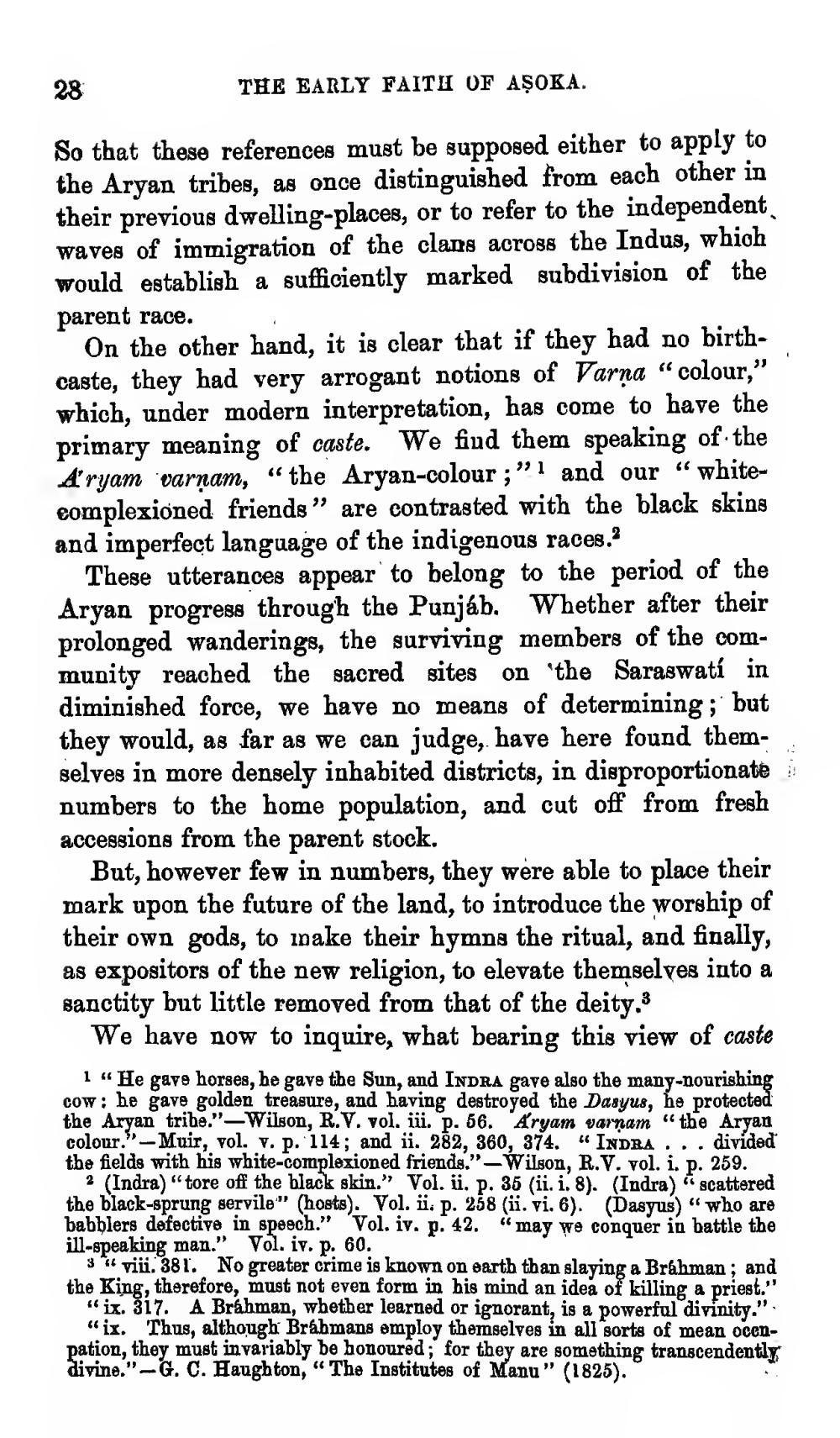________________
THE EARLY FAITI OF AŞOKA.
So that these references must be supposed either to apply to the Aryan tribes, as once distinguished from each other in their previous dwelling-places, or to refer to the independent waves of immigration of the clans across the Indus, which would establish a sufficiently marked subdivision of the parent race.
On the other hand, it is clear that if they had no birthcaste, they had very arrogant notions of Varna “colour," which, under modern interpretation, has come to have the primary meaning of caste. We find them speaking of the Aryam 'varnam, “the Aryan-colour;"I and our “whitecomplexioned friends” are contrasted with the black skins and imperfect language of the indigenous races.
These utterances appear to belong to the period of the Aryan progress through the Punjab. Whether after their prolonged wanderings, the surviving members of the community reached the sacred sites on the Saraswatí in diminished force, we have no means of determining ; but they would, as far as we can judge, have here found themselves in more densely inhabited districts, in disproportionate numbers to the home population, and cut off from fresh accessions from the parent stock.
But, however few in numbers, they were able to place their mark upon the future of the land, to introduce the worship of their own gods, to make their hymns the ritual, and finally, as expositors of the new religion, to elevate themselves into a sanctity but little removed from that of the deity. 3
We have now to inquire, what bearing this view of caste 1 "He gave horses, he gave the Sun, and INDRA gave also the many-nourishing cow; he gave golden treasure, and baving destroyed the Dasyus, he protected the Aryan tribe."-Wilson, R.V. vol. ii. p. 56. Aryam varnam “the Aryan colour."--Muir, vol. v. p. 114; and ii. 282, 360, 374. " INDRA ... divided the fields with his white-complexioned friends." - Wilson, R.V. vol. i. p. 259.
2 (Indra) “tore off the black skin." Vol. ii, p. 35 (ii. i. 8). (Indra) a scattered the black-sprung servile" (hosts). Vol. ii. p. 258 (ii. vi. 6). (Dasyus) “who are babblers defective in speech." Vol. iv. p. 42. “may we conquer in battle the ill-speaking man.” Vol. iv. p. 60.
3** viü. 381. No greater crime is known on earth than slaying a Brahman; and the King, therefore, must not even form in his mind an idea of killing a priest."
" ix. 317. A Brahman, whether learned or ignorant, is a powerful divinity.".
“ix. Thus, although Brabmans employ themselves in all sorts of mean ocenpation, they must invariably be bonoured, for they are something transcendently divine."-G. C. Haugbtor . “The Institutes of Manu" (
VIALUU (1040).




